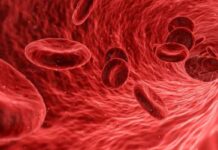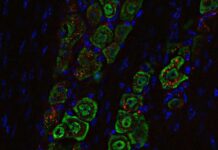As the number of coronavirus cases continues to rise beyond 4.5 million, a mysterious illness seems to have gripped the pediatric population around the world. Across America and most of Europe, children are being hospitalized due to an inflammatory syndrome with symptoms similar to that of Kawasaki disease and toxic shock syndrome. Abdominal pain, cardiac symptoms, and fever seem to be the most common feature of the illness.
It is now being referred to as multisystem inflammatory syndrome in children. According to Dr. Jeffrey Burns at Boston Children’s Hospital, the multisystem inflammatory syndrome seems to be a post-viral syndrome, arising due to the immune system overreacting to the virus and causing a Kawasaki-like inflammatory disease.
Kawasaki Disease, first discovered in Japan by Tomisaku Kawasaki, is an acute, self-limiting illness of unknown etiology most commonly found in children. It involves inflammation of the medium-sized blood vessels of the body and can present with fever, rash, redness of the eyes, swollen lymph nodes, redness of the palms and soles, and, in severe cases, coronary artery aneurysms.
Toxic Shock Syndrome is often a complication of bacterial infections, mostly those caused by Staphylococcus Aureus. It is a rare, fatal illness that can result in fever, rash, low blood pressure, and multi-organ involvement.
Doctors in Britain were the first to issue a warning regarding the mystery illness back in April and since then America, France, Italy, and Spain have also reported multiple cases of the multisystem inflammatory syndrome.
A recent study published in the journal The Lancet reported a 30-fold increase in the incidence of the Kawasaki-like disease in the Bergamo province of Italy. The city of Bergamo has the highest rate of infections and deaths in Italy making it the natural observatory of virus manifestations in the general population. The research was conducted at the Hospital Papa Giovanni XXIII in Bergamo, Italy.
A total of 19 children (Group 1) were diagnosed in the 5 years preceding February 2020, while ten patients (Group 2) were diagnosed between February 18 and April 2020, which is when the pandemic began in the region. This represents a 30-fold increase in the incidence of the disease. In group 2, eight out of the 10 patients were found to be positive for COVID-19.
Children diagnosed after the pandemic began in the region, showed evidence of immune response to the virus, were older, had a higher rate of cardiac involvement, and signs of toxic shock syndrome. Thus, pointing towards the theory that the SARS-CoV-2 epidemic is associated with a higher incidence of a severe form of Kawasaki disease.
However, the Italian study has its limitations due to the small sample size and only being conducted among patients in Italy. Despite this, researchers believe that a similar outbreak of Kawasaki-like disease can be expected in countries involved in the pandemic.
Reference:
Verdoni, L., Mazza, A., Gervasoni, A., Martelli, L., Ruggeri, M., Ciuffreda, M., Bonanomi, E., & D’Antiga, L. (2020). An outbreak of severe Kawasaki-like disease at the Italian epicenter of the SARS-CoV-2 epidemic: an observational cohort study. Lancet (London, England), 10.1016/S0140-6736(20)31103-X. Advance online publication. https://doi.org/10.1016/S0140-6736(20)31103-X




